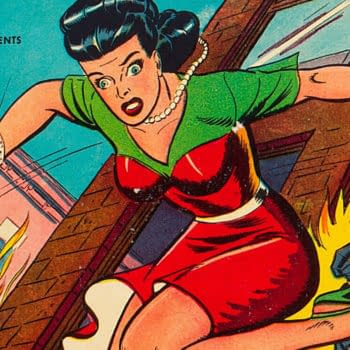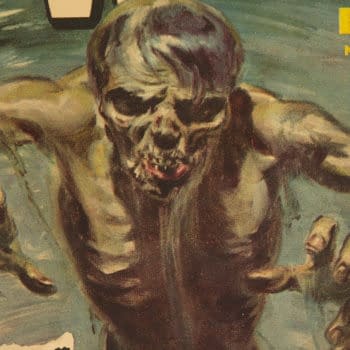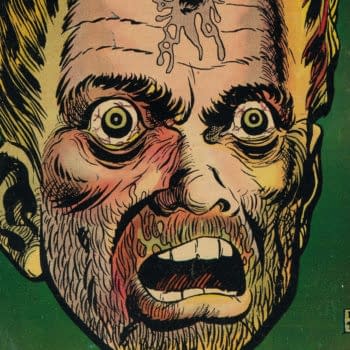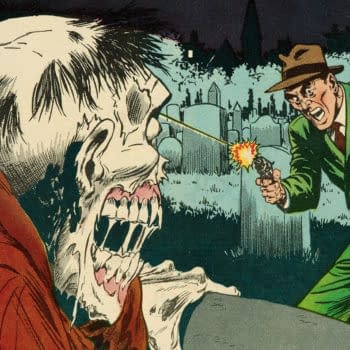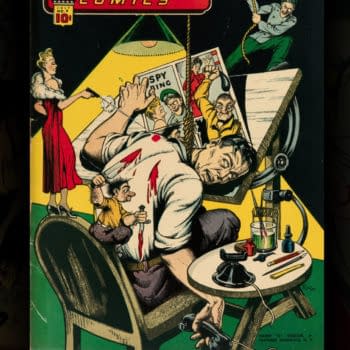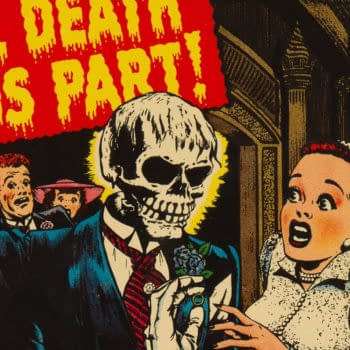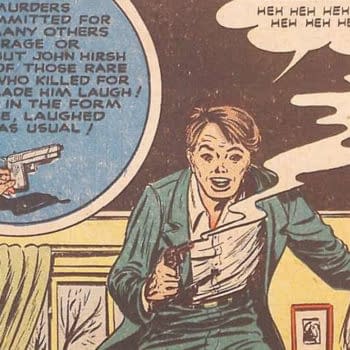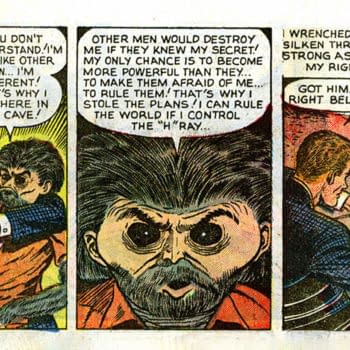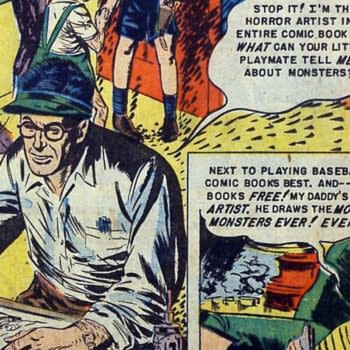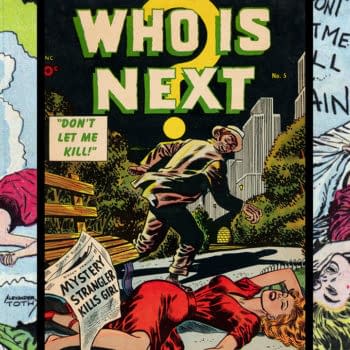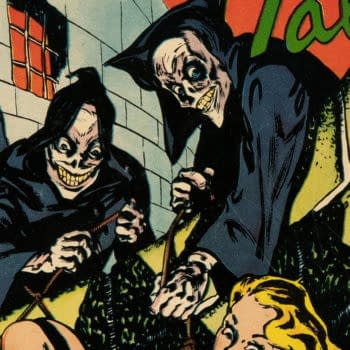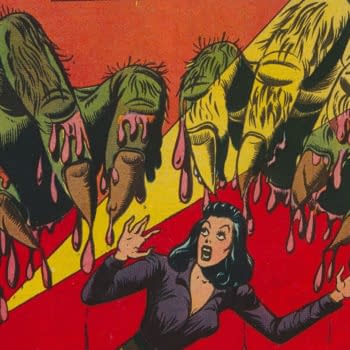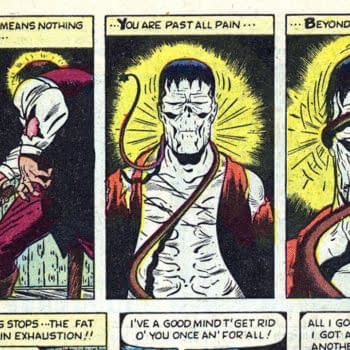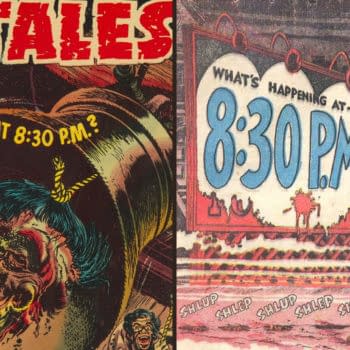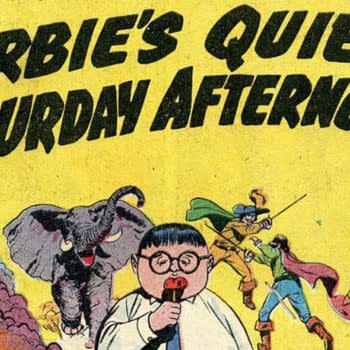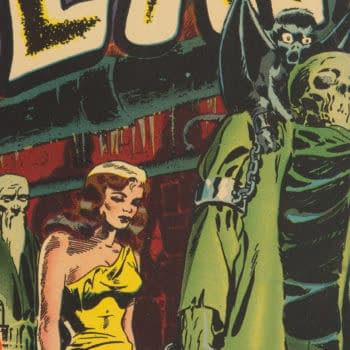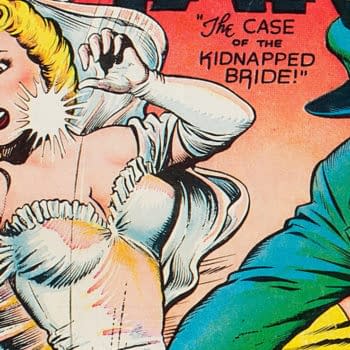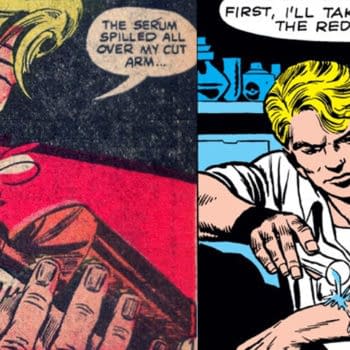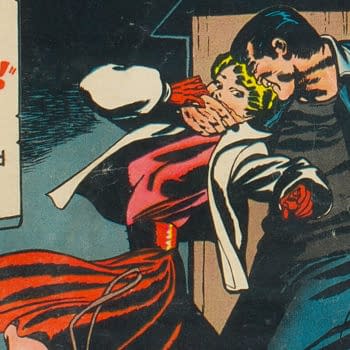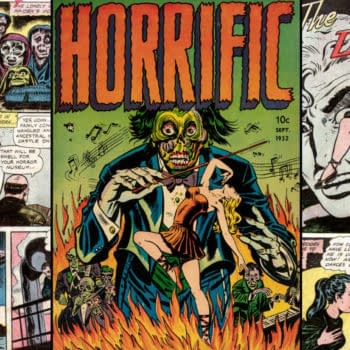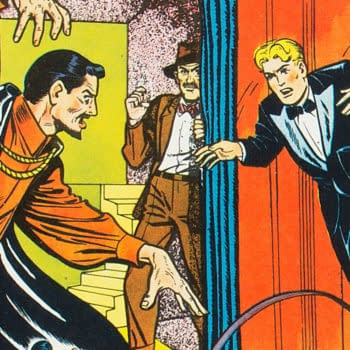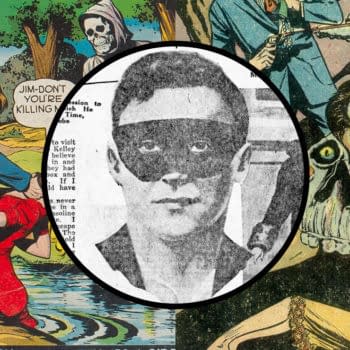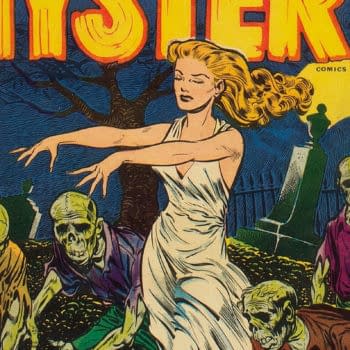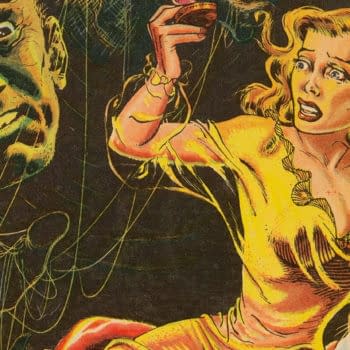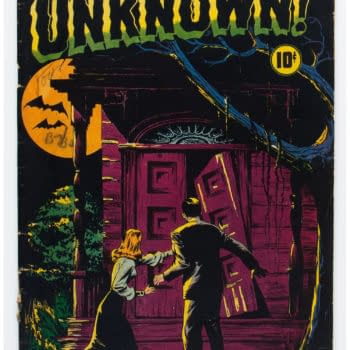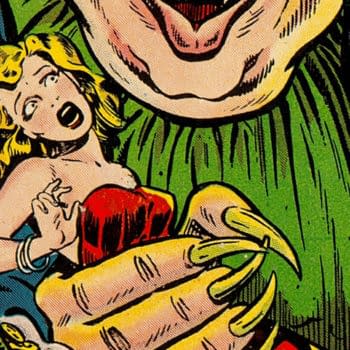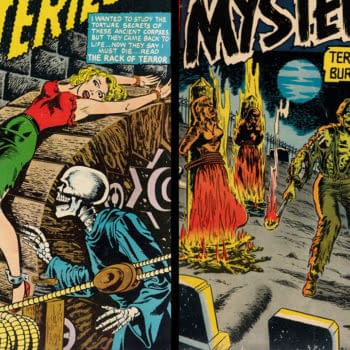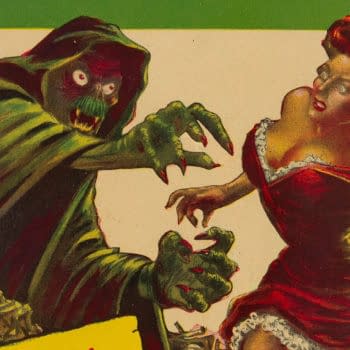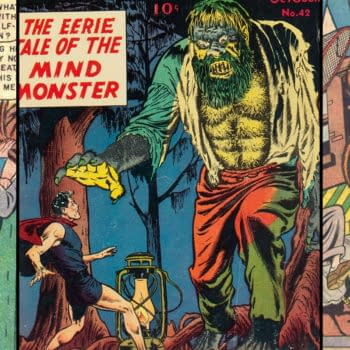Crime Reporter #1 is a classic late-1940s crime comic featuring a villain named Dr. Morphine and an exclusive spot called Zombie Club.
Heritage Sponsored Archives
The creature on Norman Saunders' Stories from Another World #4 cover may look like a zombie, but it turns out to be something even worse.
Legendary artist Don Heck created many memorable covers over the years, but his cover for 1953's Horrific #3 might be his most infamous.
Underappreciated artist Harry Anderson created some of the most memorable Marvel horror covers of the Pre-Code era, and Marvel Tales #124 is a classic.
Gus Ricca's nightmare vision of a comic artist being destroyed by his own work is just one example of his interpretive approach to comic horror.
Bill Everett was a prolific contributor to Marvel/Atlas's Pre-Code era, and created many underappreciated covers from this period.
D.S. Publishing's Exposed True Crime Cases contained some cold-blooded material even by the standards of the pre-Code era.
Marvel's Man Comics #26 from 1953 features a Spider-Man prototype radiation-transformed human spider at Los Alamos Laboratory.
Weird Tales artist Vince Napoli's story in Beware #12 is about a comic horror artist who finds new inspiration during a creative dry spell.
Who Is Next #5 is both brutal crime comic and a surprising look at how the 1950s criminal justice system handled mental health issues.
Chilling Tales #16 is a Pre-Code Horror comic book classic with stories by Rudyard Kipling and Edgar Allan Poe.
Chesler's Punch Comics #19 is underrated for its horror-focused cover that preceded the era when Pre-Code Horror boomed in the comics.
Zombie by Bill Everett debuted in Menace #5 from Marvel/Atlas in 1953, and would return to enter the Marvel Universe 20 years later.
Witches Tales #25 (Harvey, 1954) is a classic among two different groups of people for two different reasons that involve the same story.
An unlikely hero with unassuming beginnings, Herbie Popnecker has achieved cult classic status over the course of his 60+ year existence.
Avon's Eerie #2 is a fascinating Pre-Code comic book from a historic publisher that features cover and artwork by the legendary Wally Wood.
Created by Jack Sparling for the newspaper PM, the comic book reprint of the strip caused some controversy with this Jack Kamen cover.
Before Ant-Man in Tales to Astonish' #27's "The Man in the Ant-Hill", there was "Trapped in the Ant-Hill" with artwork by Syd Shores.
John Buscema did significant work for publisher Orbit from 1950 to 1953, including the cover for this notorious issue of Wanted Comics.
Horrific #1's cover image is based on the interior story "The Dancer of Death" a creepy twist on the Danse Macabre or Dance of Death concept.
This Highest Graded CGC 9.6 Canadian version of Marvel's Astonishing with Marvel Boy features a Marvel Boy cover that didn't appear in the U.S. version.
Claiming to be inspired by the play The Bat, which spawned movies influential on Batman, masked robber James Walters terrorized 1925 Boston.
Black Cat Mystery #37 from Harvey in 1952 features stand-out work by Richie Rich creator Warner Kremer and Moon Knight co-creator Don Perlin.
Early 1950s Fiction House series Ghost Comics rivals even EC Comics for horror, suspense, and adult situations in the pre-Code comics era.
American Comics Group's Adventures into the Unknown is considered the first ongoing horror series in American comic book history.
Haunted Thrills was one of the most succesful of Farrell Publications' Pre-Code Horror series, featuring artwork from Iger Studio.
Dark Mysteries editor William K. Friedman was an experienced hand at defending pulp and comic book publishers from against the government.
Best known as a science fiction artist of covers for pulps & paperbacks, Kelly Freas did a fantastic Pre-Code Horror cover for Witchcraft #5
There's something undefinably unique about Quality Comics from the post-WWII era, and early 1950s Doll Man is a good example.
The creation of artist Bill Ward, pre-Code glamour icon Torchy ended her brief but memorable series run at Quality Comics with Torchy #6.


